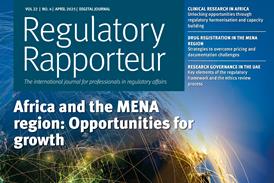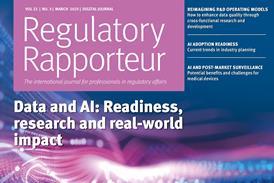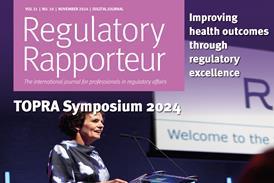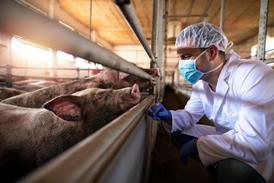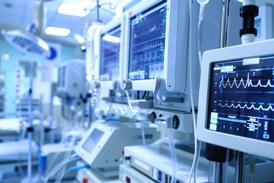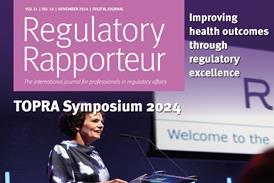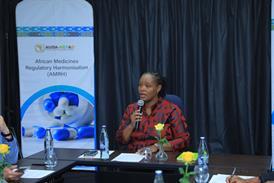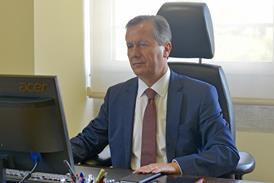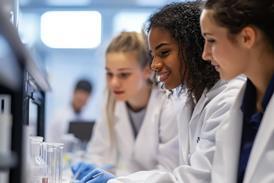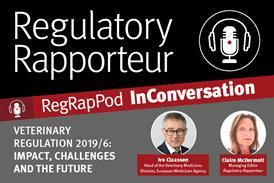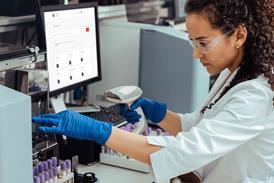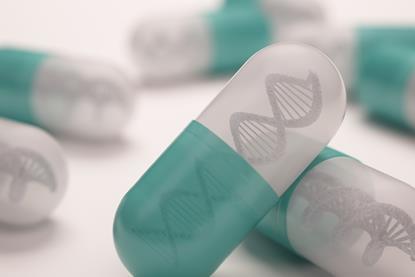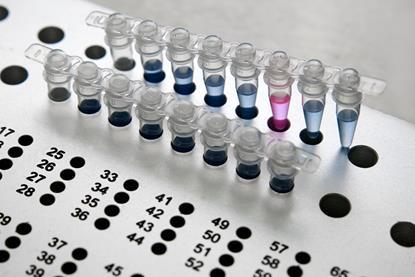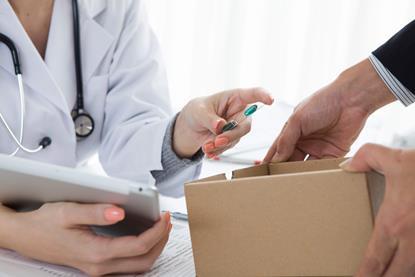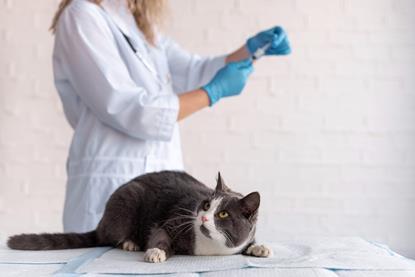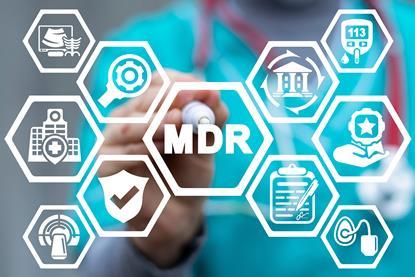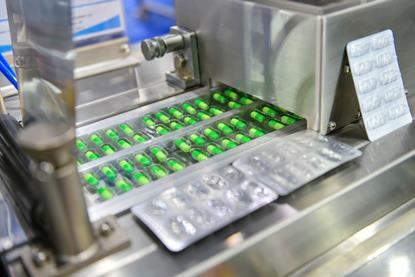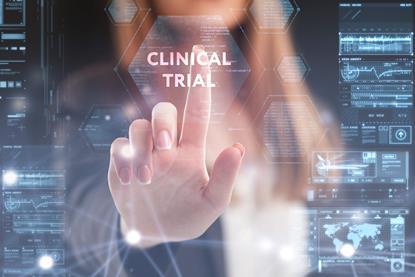Symposium 2021
Proceedings from TOPRA's virtual Symposium
DECEMBER 2021 | VOL. 18 | NO.11
VM4: Practical implementation of the Union Product Database
This session looked at one of the main elements of the practical implementation of Regulation 2019/6, which is the creation of a Union Product Database (UPD).
MD5: Innovation in Drug-Device Combinations
The session was opened by Bjorg Hunter posing a question about how innovative companies can manage often complex and different global regulations when they are developing connected, environmentally friendly products for the benefit of the patients…
IVD3: EU Implementation: Current State
The session was opened by Bjorg Hunter posing a question about how innovative companies can manage often complex and different global regulations when they are developing connected, environmentally friendly products for the benefit of the patients…
MD4: Clinical investigations – Is coordinated CA assessment the future?
The first speaker was Amy Bennet, who highlighted that any coordinated clinical assessment requires sound data gathered from preclinical development, especially in class IIa, IIb and above devices.
HM7: Regulatory progress in delivering on the promise of ATMPs
Tomáš Borán introduced the presenters, co-chair and panellists for this session, discussing the regulatory progress in delivering on the promise of advanced therapy medicinal products (ATMPS)
HM10: Scenarios to Consider Risk
This interactive session focused on how to develop and successfully implement a regulatory strategy. Participants were given the opportunity to analyse different scenarios and compare answers with the panellists who provided practical advice on ways to avoid potential pitfalls and disastrous mistakes.
MD3: Digitalisation: How to bring paradise into regulatory work
Martin Witte chaired and introduced this interesting session, which considered the digitalisation of medical device regulatory information –using technology to allow more effective interrogation and control of available data…
VM1: Regulatory science – focus on biologicals
Opening the session, Ivo Claassen spoke about the unprecedented situation of the COVID-19 pandemic and the effects it has had on regulatory adaptation and emergency response preparedness. It was remarkable that novel mRNA vaccines for humans were developed and licensed in such a short period. He believes that there will be a considerable impact on the regulatory landscape in the long term.
HM8: Enhancing dialogue to foster innovation
Susan Bhatti welcomed the speakers and highlighted the importance of having an iterative, responsive and holistic regulatory dialogue with a flexible scientific advice process and an alignment across the stakeholders. The recent example of the pandemic has emphasised the importance of having proactive measures and time-efficient interactions with health authorities.
Listening is only the first step
From ‘Knocking on the door’ to co-creation: 25 Years of patient engagement in R&D: Virginie Hivert, Therapeutic Development Director, EURORDIS, reflects on the evolution of patient engagement in the rare diseases field, emphasising the importance of collaboration between stakeholders and patients.
IVD5: How do I Implement IVDR? Some key practicalities
This session looked at the practicalities of IVDR implementation and considered how to prepare application documents, the expectations for performance evaluation (PE) and postmarketing clinical follow-up (PMCF).
VM5: Post-authorisation under Regulation 2019/6
Dries Minne opened the final session of the Veterinary Medicines Symposium 2021, covering changes to post authorisation procedures under Regulation 2019/6.
VM2: Encouraging specific investments
Session 2 co-chaired by Beate Lohr and Emily Drury looked into specific opportunities opened up by the Veterinary Medicines Regulation intended for limited markets (Article 23) and for gaining additional data protection through defined post-authorisation product developments (Article 40(5)).
MD1: MDR implementation – is there a future for legacy devices?
The first speaker for this session was Derek Foit. He defined legacy devices per Article 120 MDR, provided examples of class I to class III devices including nanoparticles, nasal sprays as specific cases…
VM3: Regulation 2019/6 on antimicrobials; requirements and availability
During the session, the speakers presented an overview of the new and revised rules and guidance, explored the major hurdles for new AMs, and discussed how we can protect existing AMs on the market through measures such as harmonisation of summaries of product characteristics (SPC) and flexible dosing labels.
MD2: Global development strategy, which market should you go to first?
Michelle Lotte started the session. She summarised considerations of the MDD/MDR transition against submission to the FDA.
HM2: Fireside chat with Emer Cooke: a review of current and future priorities
This session was a conversation between Daniela Drago and Emer Cooke. Ms Drago began by asking Ms Cooke to reflect on her first ten months leading the European Medicines Agency (EMA). She was quick to respond: “It has been incredible, a privilege”, adding that it is an exciting time for medicines regulation in Europe and, indeed, the world.
HM5: Reliance, worksharing and recognition as 21st century regulatory tools
Francesca Buttigieg introduced this session on reliance, worksharing and recognition as 21st century regulatory tools. Murray Lumpkin gave the opening presentation, giving a strong justification for the use of work-sharing and reliance as a use of best practice by all regulatory authorities (RAs), not just the smaller, less known RAs….
HM4: Real world evidence in regulatory decision-making
During the first part of the session, Fred Senatore discussed applications and the challenges of real word data (RWD) and real-world evidence (RWE). He opened his talk with a definition of the two, with RWD being defined as the data collected from a variety of sources, and RWE as the analysis of the source.
HM1: Spotlight on CEE – challenges and opportunities in the region
The first session of this virtual symposium was opened by Eva Kopecna, who introduced three speakers, two of whom represented two different regulatory agencies – the Czech State Institute for Drug Control (SÚKL), which is part of the EU regulatory community, and the Russian State Institute of Drugs and Good Practices (SID&GP).
HM6: Clinical trials of the future – patient orientated and digitally connected
Susan Bhatti started the session by welcoming everyone and clarifying that the aim of the meeting was to discuss how clinical trials can be transformed by using digital technologies to enrol and monitor patients, resulting in more inclusive, flexible, connected and patient-centred studies.
HM3: Evolution of EMA-EUnetHTA collaboration across decision makers
This session focused on the evolution of the European Medicines Agency (EMA) and The European Network for Health Technology Assessment (EUnetHTA) collaboration.


